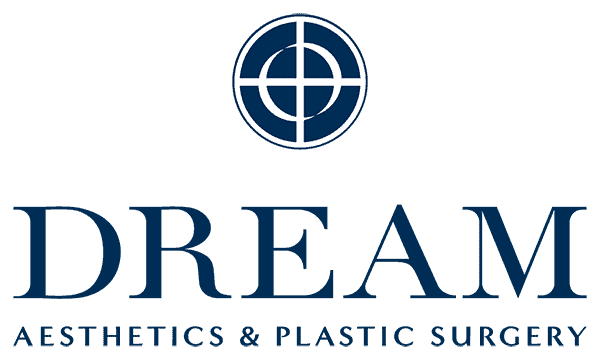
Acne Scars Treatment
Lighten and improve the appearance of acne scars.
What Are Acne Scars
Acne scars are a direct consequence of the skin’s healing process following acne outbreaks. They can manifest in various forms, ranging from shallow depressions to raised tissue. The nature and severity of these scars are influenced by factors such as the depth and duration of the acne, the individual’s skin type, and their unique healing processes.
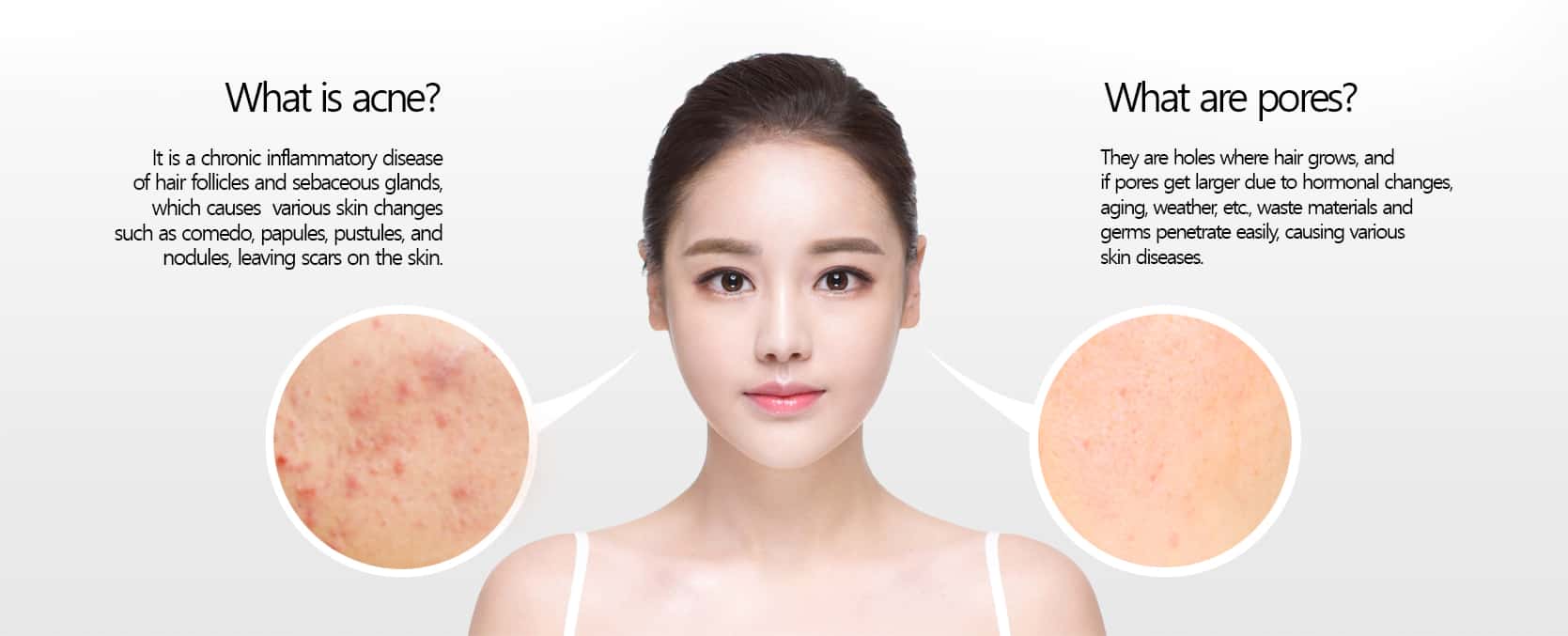
What Causes Acne Scars
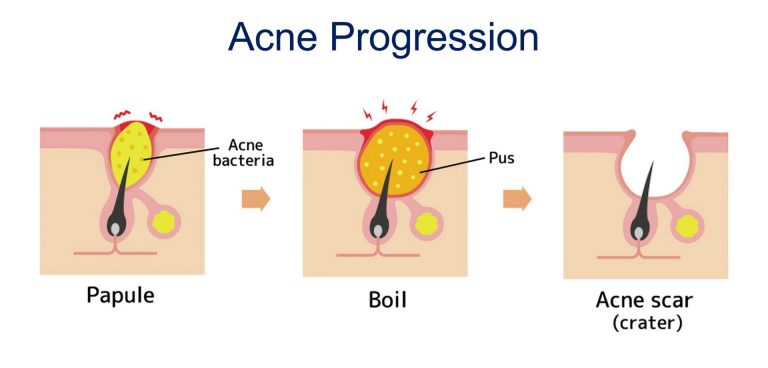
Acne scars can develop for several reasons, but one of the most common factors is genetics. If there is a family history of acne scarring, individuals are more likely to experience it as well.
Age also plays a role, as the skin loses collagen over time. Collagen is essential for skin healing and repair, especially after acne breakouts. When the skin produces too much or too little collagen, it can lead to scarring.
Additionally, acne is an inflammatory skin condition, and the severity and duration of inflammation can increase the chances of scarring. This is why it is important to seek early acne treatment, as delaying treatment may raise the risk of developing scars.
Types Of Acne Scars
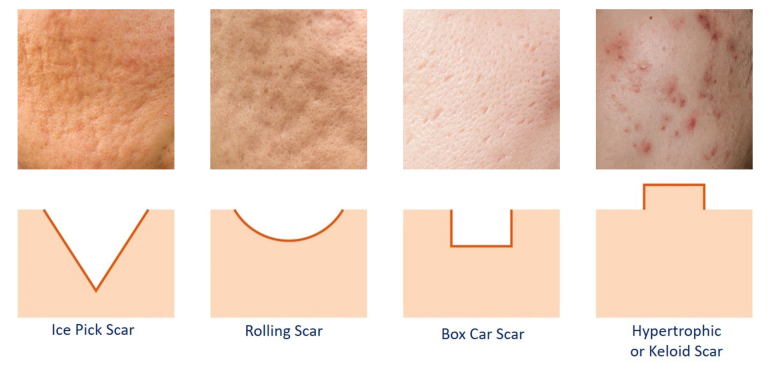
Rolling Scars
Rolling scars are red (or brownish), depressed spots that appear in the areas where one previously had an acne lesion. These scars can have various depths and their sloping edges make one’s skin look uneven and wavy.
Boxcar Scars
These scars are broad, box-like depressions that have sharply defined edges. They usually result from widespread acne, or chickenpox. Most often, the boxcar scars form in areas like the jaw and lower cheeks. It is common in areas with thicker skin.
Ice-Pick Scars
Ice-pick scars are, generally, smaller and narrower indentations pointing down into the surface of the skin. They commonly appear on the cheeks. It is often hard to treat these scars and they normally need persistent and aggressive treatment for acne scar removal.
Keloids And Hypertrophic Scars
These acne scars are raised tissue growth on the acne site. Too much scar tissue is responsible for these scars and this scar tissue buildup usually happens from the older acne spots. Keloids and hypertrophic scars appear similar, but the former are generally larger and raised high. These scars are more common in areas like the chest, back, shoulders, and jawline.
Acne Scars Treatments & Cost in Singapore
TCA Peels
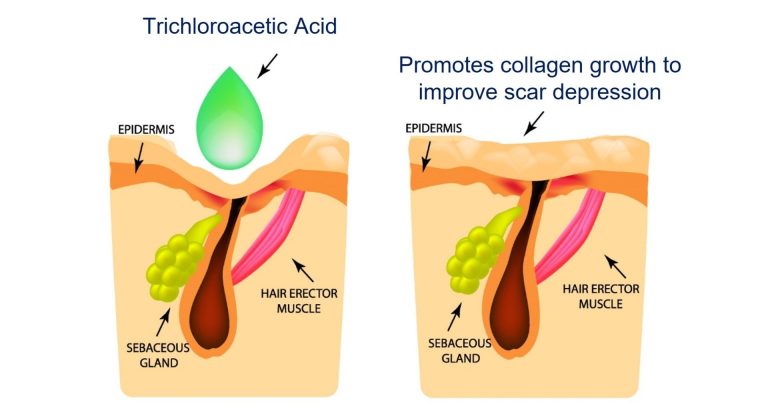
Chemical peels, like TCA peels, are useful for treating mild, shallow scars. They apply a chemical substance on the skin, trichloroacetic acid in case of TCA peels, to remove the outer skin layer while promoting new skin growth. As the new skin layer is formed after each treatment, it keeps getting smoother.
Generally, TCA peels are effective for mild, shallow scars only. When it comes to deeper scars, the medium-strength and superficial peels do not work.
Cost: $200 – $300
Microdermabrasion

It’s a minimally invasive acne scar treatment that is used for renewing overall skin texture and tone. Microdermabrasion isn’t just effective against acne scars, it can also help improve sun damage, fine lines, wrinkles, age spots, and melasma among other skin conditions.
During the procedure, a special abrasive applicator is used for gently sanding away the outer skin layer to achieve a rejuvenating effect. Another technique used for microdermabrasion relies on fine crystals of sodium bicarbonate or aluminum oxide applied to the skin to achieve the same effect.
This acne scar removal treatment works for depressed scars that aren’t too deep.
Cost: $80 – $250
Fillers
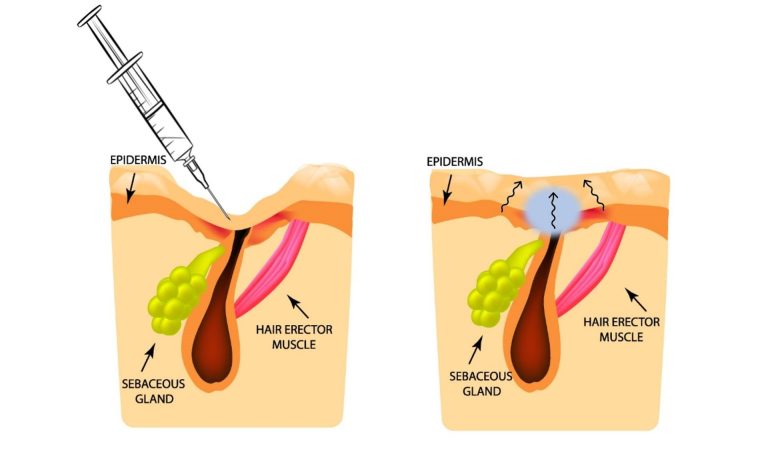
Dermal fillers are commonly used to elevate shallow, broad-based acne scars. While the results are temporary, they can promote collagen production in the skin, which may lead to gradual improvements in the appearance of scars over time. This treatment is often considered suitable for certain types of scars, such as rolling and boxcar scars, as it helps smooth the affected areas.
Cost: $800 – $1000/syringe
Lasers
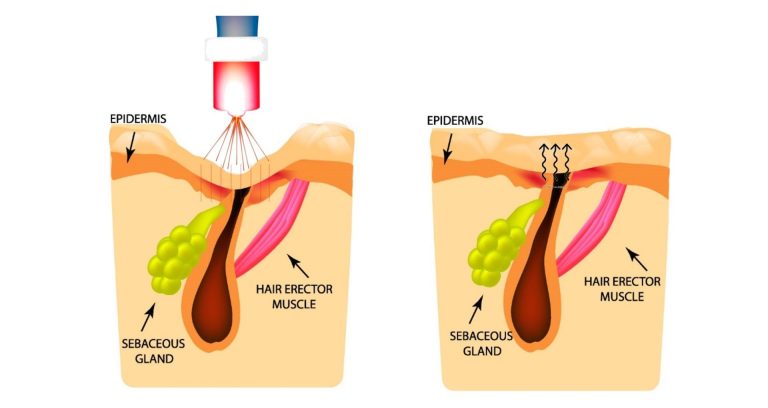
Laser treatments are frequently used for addressing acne scars, targeting both discolouration and indentations. These treatments function by either removing the outer skin layer or encouraging collagen production to support skin repair.
Various laser types are available to suit different skin concerns, with fractional CO2 lasers often recommended for acne scars. This treatment gently resurfaces the skin while promoting scar healing. Laser treatments can be tailored to address different types of acne scars for a more refined appearance.
Cost: $250 – $600 per session
Subcision
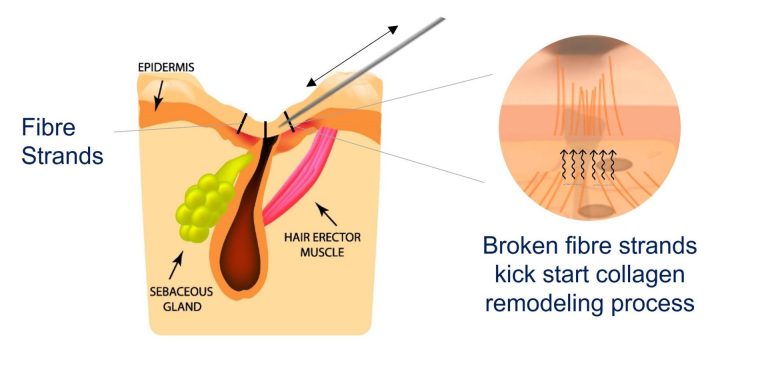
Subcision is a minimally invasive procedure used to improve the appearance of depressed acne scars. A small puncture is made in the skin, and a fine needle is inserted to release the fibrous bands that pull the scars downward. This process helps the skin lift and smooth over time as natural wound healing promotes collagen production. Typically performed in an outpatient setting, subcision is well-tolerated and is often recommended for treating rolling and boxcar scars.
Cost: $200 – $400/session
Dermal Grafting
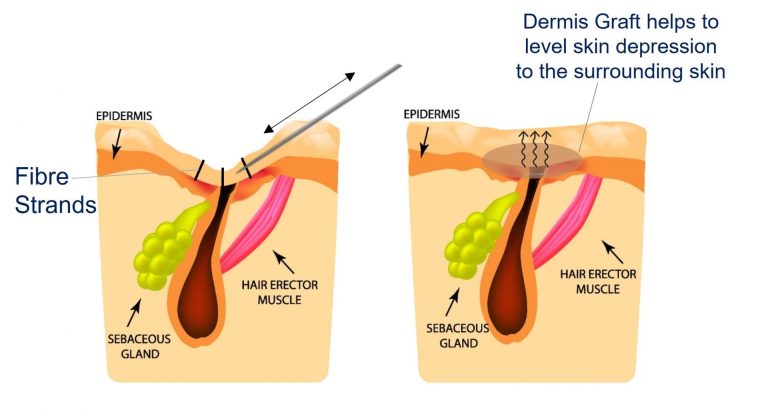
Dermal grafting is a procedure used to address acne scars by transplanting a small section of the patient’s own skin, typically taken from behind the ear, to the scarred area. The graft is secured using sutures, surgical skin glue, or steri-strips to ensure proper placement. The collagen-rich dermis helps to fill in depressions and improve the texture of the skin over time. This technique is often recommended for treating deep rolling and boxcar scars.
Cost: $1,000 – $3,000 per session
Still Experiencing Active Acne?
If you are still experiencing breakouts, it is recommended to treat the active acne condition before progressing on to acne scar treatments.
Seek professional help early can prevent permanent scarring or worsening effect of acne.
Key benefits from treating acne condition early
- Will help to eliminate blemishes at an early stage before developing into acne cysts.
- Timely treatment decreases the likelihood of aggravating into chronic acne which may result to the need for stronger and more extensive treatment regime.
- Effectively prevents acne scars from developing.
- Improves individual skin’s condition physically as well as psychosocial effects.
Acne skin condition is treatable with Dream Acne & Scars Programme, a personalized treatment solution that will help you get rid of skin problems and regain your confidence.
Fractional RF (FRF) Treatment
Every single individual struggling with open pores, fine lines, or uneven skin tone can benefited from Fractional RF (FRF) Treatment. It helps to give the skin a fresh and healthy look with minimum risk or side effects.
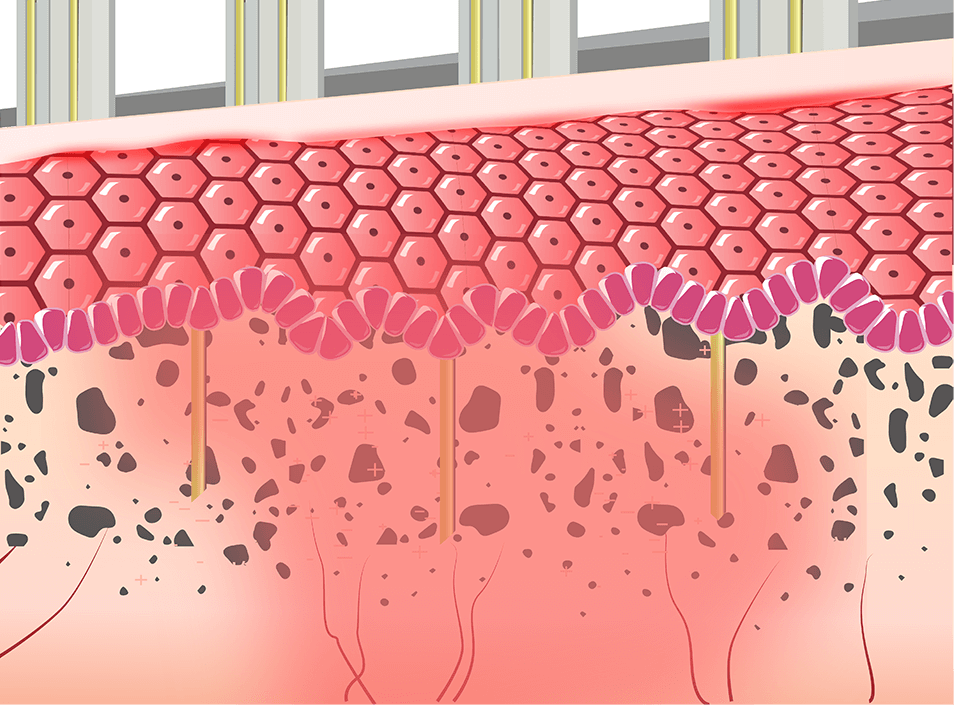
Step 1
Penetration of multi-micro electrodes

Step 2
Formation of electromagnetic
field
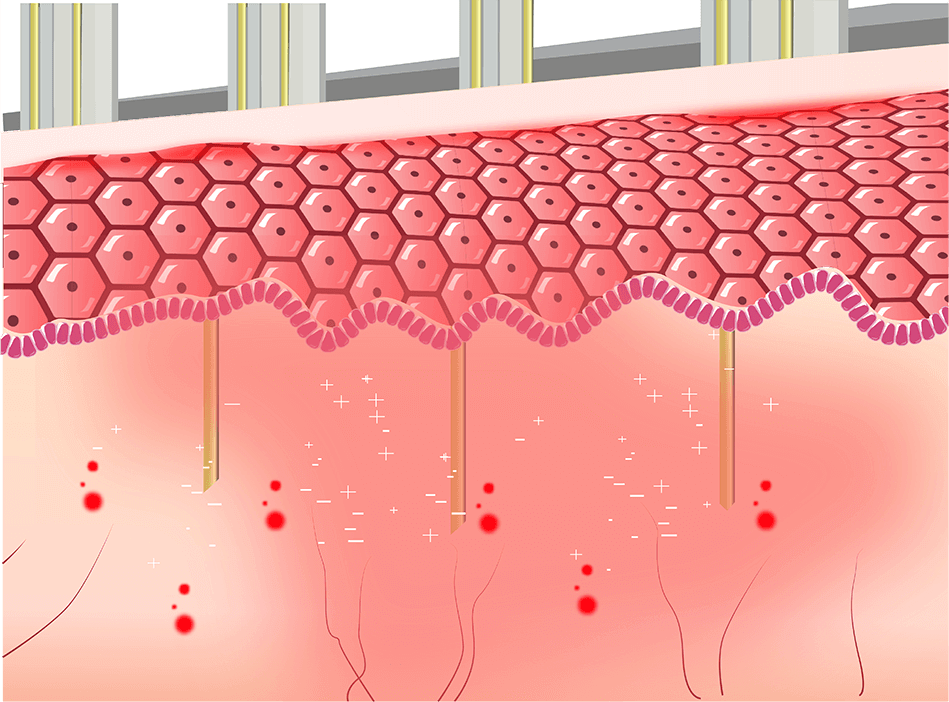
Step 3
Selectively react to abnormal vessels & stregthens basement membrane
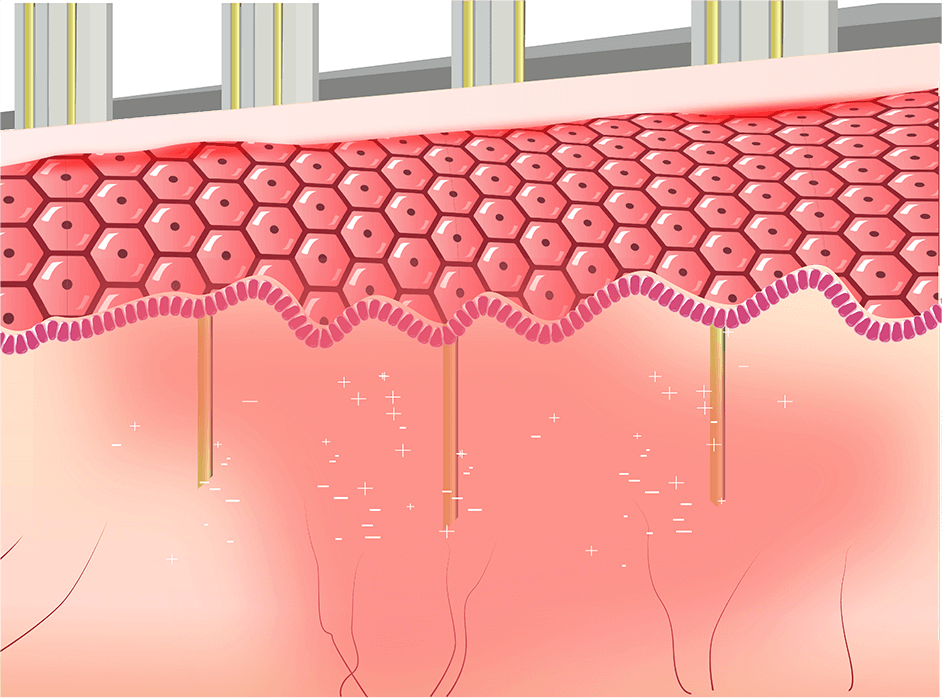
Step 4
Completion
Fractional (RF) treatment uses repeated ultra-short pulse technology that acts only on targeted sites. It reacts with abnormal blood vessels and hyper-pigmented tissues to reduce the appearance of acne scars or stretch marks. The radiofrequency generated in Fractional (RF) treatment raises the temperature of the skin to 60C. This either denatures the proteins or causes collagen coagulation. Consequently, the healing process of the wound is stimulated, and the skin layers remodel and rejuvenate. The eight different types of Continuous Wave (CW) & Pulsed Wave (PW) modes set in the Fractional (RF) treatment make it safe for treatment. Furthermore, the bipolar non-insulated electrodes direct the waves into all the dermal layers of the skin.
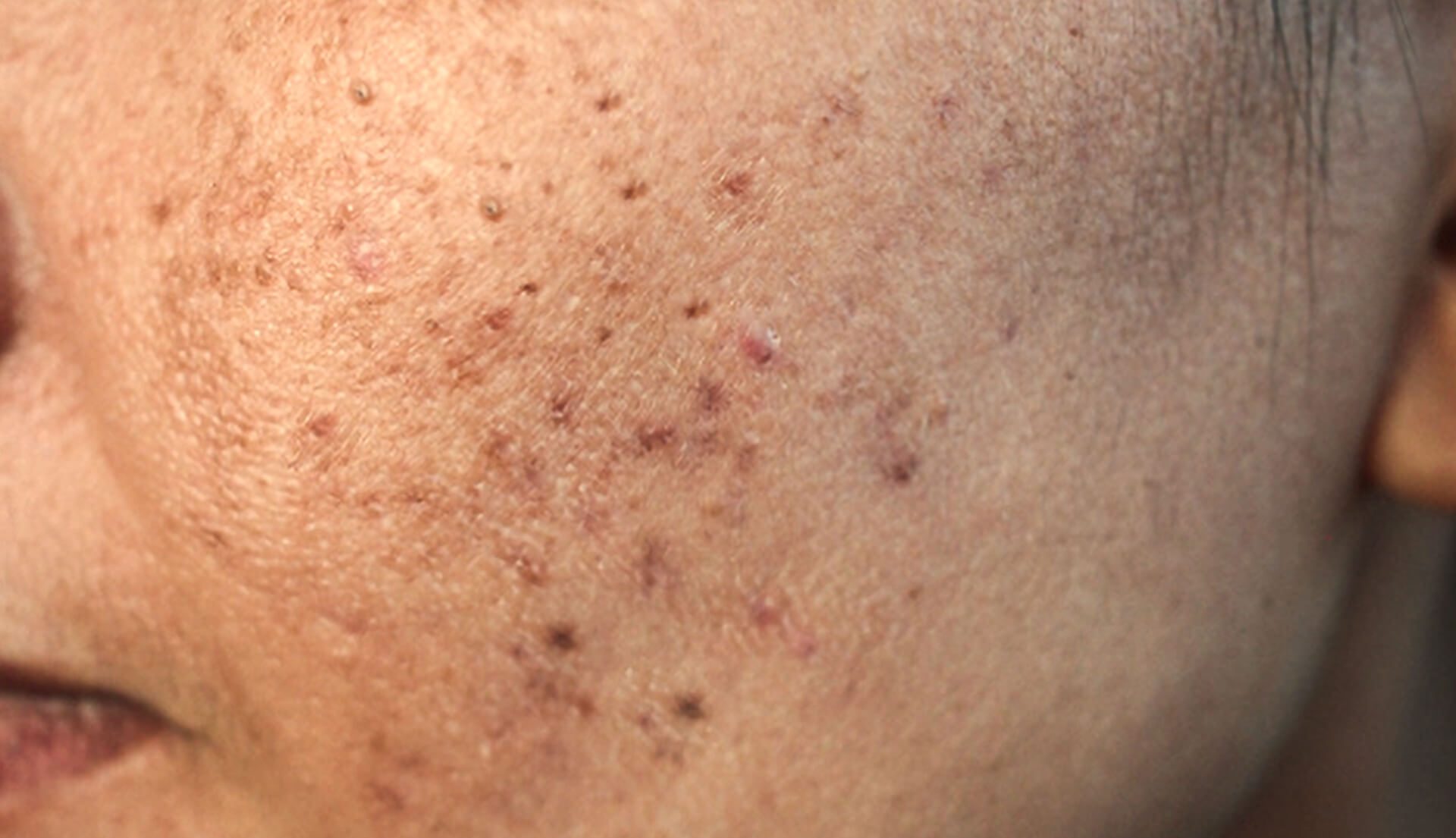
Acne Scars
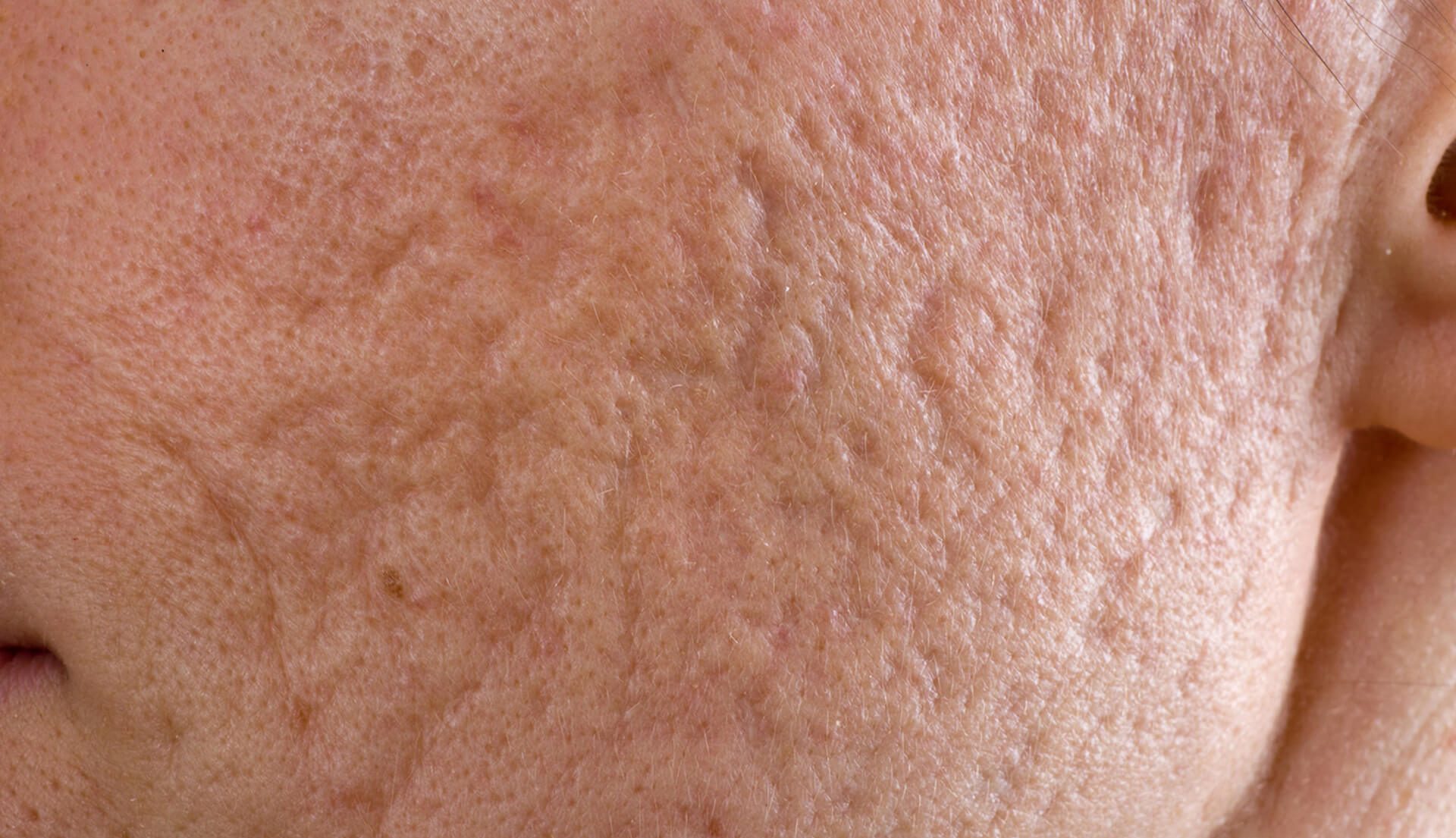
Atrophic Scars
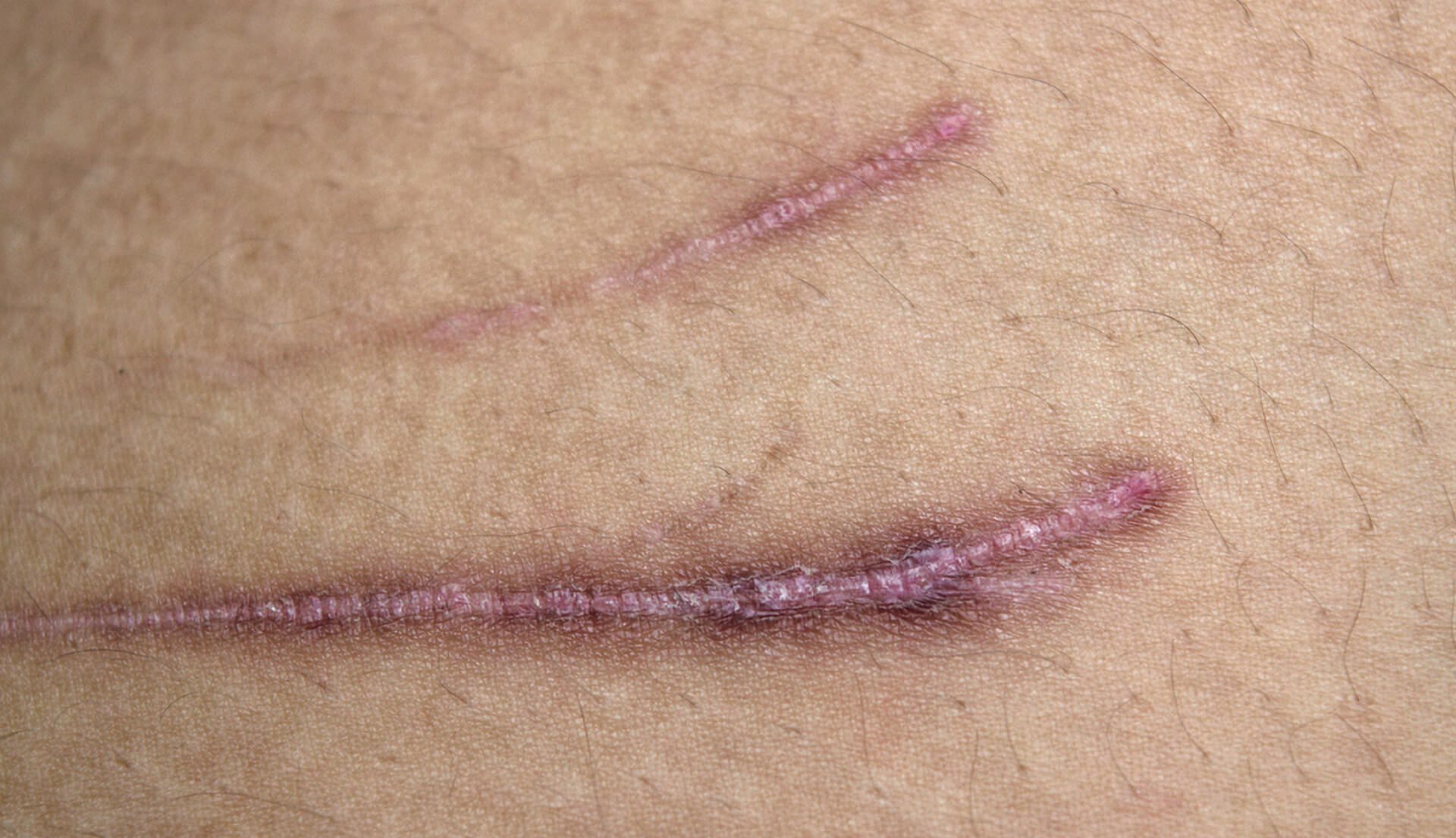
Scars
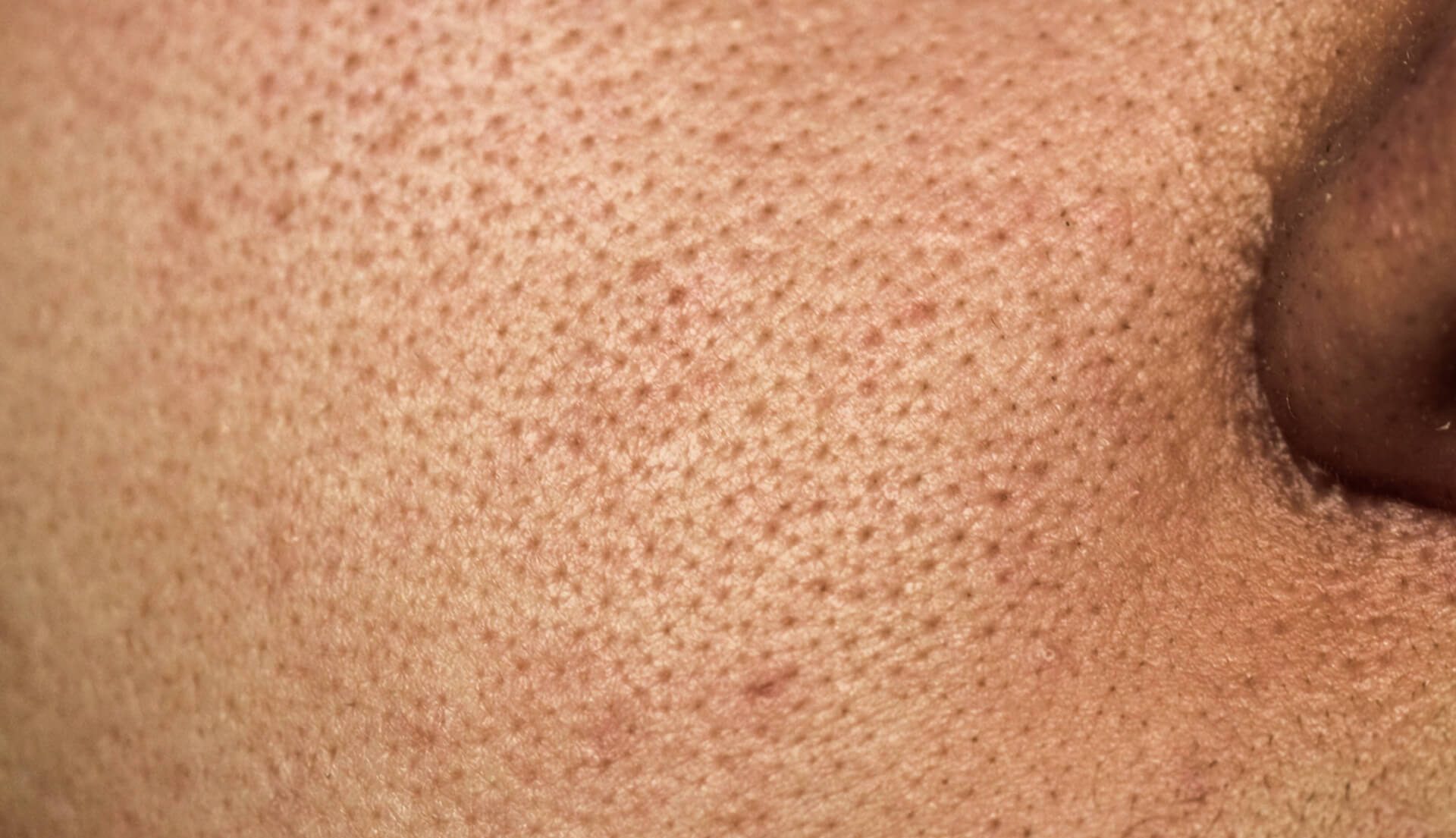
Pores
Specifically for the treatment of scars such as acne scars, hypertrophic scars, and atrophic scars, Fractional (RF) treatment help to minimize their appearance by stimulating collagen production, which can help to fill in the depressed areas of the skin. As a uniform electric field is generated around the scar’s skin, the PW treats the pigmentation caused by inflammation while CW tightens the skin. Maximum duration of 300ms of CW4 is used for resolving a scar mark. As with any skin treatment, the number of sessions required for optimal results will depend on the severity of the acne scars and the individual’s skin type. While some people may feel improvement in the appearance of their scar after 4 – 6 initial sessions, others might require more. An average time required for healing of acne scars is summarized in the table;
| Mild | 2 – 4 months |
| Moderate | 4 – 7 months |
| Severe | 6 – 20 months |
Fractional (RF) treatment is also used for improving stretch marks. As the micro-needles are inserted into the affected skin, they radiate the radio frequency waves. This generates an electrothermal effect that eventually heals the skin’s basement membrane so that it is strengthened. Simultaneously, the abnormal blood vessels are targeted, and the production of collagen and elastin is also stimulated. As the skin revitalizes and regenerates, improving the appearance of stretch marks.
Frequently Asked Questions (FAQ) about Acne Scar Treatments
What If I Am In The Middle Of A Break Out? Can I Still Get Laser Acne Scar Treatment?
The ideal time to receive acne scar treatment is to wait until active acne has stopped or when it is under control. This is because if you treat active acne there is a possible risk of further scarring, so all the efforts can go in vain. Thus, you must treat the underlying acne first. Once it is treated then you can work on scars lightening treatments.
Can The Acne Scars Go Away On Their Own?
Yes, the acne scars can lighten or become less depressed as they heal naturally. Some individuals have experienced a decrease in the depth and contour without treatment. The healing ability relies on the following factors:
- Age
- Type of skin
- Skin tone
- Skin complexion
- Severity of the acne scar
Which Acne Scar Treatment Will Work For Me?
There is no universal solution for treating acne scars, as each case is unique. A comprehensive treatment plan often involves a combination of approaches to achieve optimal results. The most suitable treatment will depend on factors such as:
- The level of discoloration on the skin
- The type and severity of the scars
- Your skin type
A doctor will carefully assess these factors to develop a tailored treatment plan that addresses your specific needs.
Is There Any Downtime Associated With Acne Scar Treatment?
Depending on the treatment type, downtime differs from one treatment to another. Generally, minimally invasive procedures require downtime of around 7 days while the surgical method will take around 7 to 10 days.
What Should I Do After Acne Scar Treatment?
There are a few steps that you can follow to allow rapid healing and optimal results:
- Keep The Treated Area Of Your Skin clean and Well Moisturized
There is a greater risk of bacterial infection after the treatment. This is because the integrity of the skin is compromised. Keeping the skin clean and well moisturised improves its healing process.
It is generally safe to use a gentle cleanser a few hours after the treatment unless advised otherwise. Light moisturizers prevent the skin from drying out and prolonging the recovery process. In cases where topical antibiotics are prescribed, follow the post treatment care instructions by the doctor for a smoother recovery.
- Avoid Going Out In The Sun Or Use Sunscreen
It is recommended that you avoid direct sunlight for at least a couple of days. Post-treatment hyperpigmentation is a common phenomenon. Therefore, by avoiding the sun or applying sunscreen you can lessen the risk. Sunscreen should only be applied 24 hours after your treatment.
- Avoid Wearing Make-Up After Treatment
Makeup and cosmetic products may cause harm to skin that is healing in progress. This is because makeup can interfere with the healing of the wounds and may also increase irritation of the skin. The bacteria exposure from those products can also increase the risk of infection of the wound site.
It is safe to apply makeup after 3 days of surgery. But only light makeup can be used. You can return to the normal routine once the acne scabs have healed.
- Follow Doctor’s Advice On Skincare Use
Exfoliants are a good source of ridding your skin of dead cells but should be avoided during recovery. You should be cautious in using them and follow the doctor’s advice. Topical retinoids should be applied only after the completion of skin healing. It usually takes 7-10 days for the skin to heal completely.
- Avoid Picking Your Skin
Many people are habitual of picking their skin. Scabs are common findings after laser treatments. It is recommended you refrain from picking the scabs that go away within 5-10 days.
